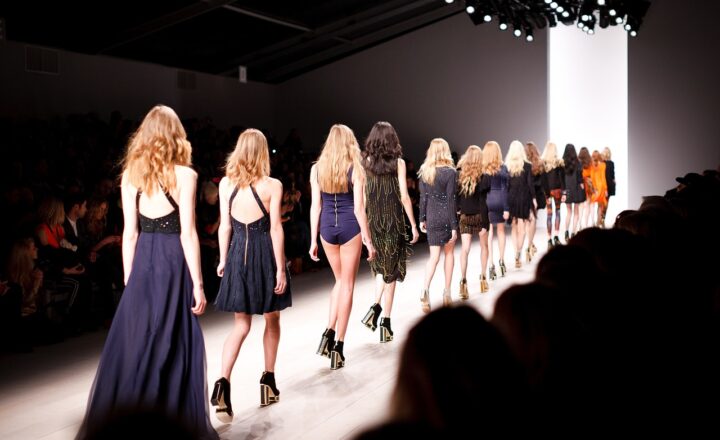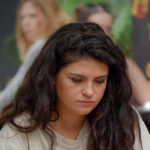The Ever-Changing Definition of Fashion: What’s In and What’s Out?
November 19, 2024

Fashion is not just about clothing; it’s a reflection of our culture, identity, and the ever-evolving nature of society. What was once considered fashionable can quickly become outdated, and as trends roll in and out with each season, understanding the dynamics of fashion is essential for anyone interested in the industry or simply wanting to stay stylish. In this article, we’ll explore how fashion has transformed over the years, the cyclical nature of trends, and what influences these changes.
1. The Historical Perspective of Fashion Trends
To fully appreciate why certain styles are considered fashionable at specific times, it’s critical to look at the history of fashion itself. From the voluminous skirts of the 18th century to the minimalism of the 1990s, each era has had its distinct characteristics shaped by socio-economic conditions, cultural movements, and technological advancements.
– **The 1920s:** Often dubbed the “Roaring Twenties,” this decade saw women gaining more freedom with the Flapper movement, which introduced shorter hemlines and looser silhouettes. Fabrics like silk and rayon became popular, and bold colors ruled the scenes.
– **The 1960s:** This decade marked a significant shift with the rise of youth culture. This was characterized by psychedelic prints, bell-bottom jeans, and the introduction of punk fashion in the late part of the decade, reflecting societal upheaval and a demand for individuality.
– **The 1980s:** Considered the decade of excess, fashion during the 80s saw dramatic silhouettes, vibrant colors, and a sense of flamboyance. Think shoulder pads, oversized clothes, and neon colors.
Fashion evolves significantly due to numerous factors including political movements, technological advances, and even economic shifts. Understanding these historical perspectives gives us insight into today’s trends.
2. The Role of Social Media in Fashion Trends
In the modern age, social media has become a powerful catalyst for creating and disseminating trends. Platforms like Instagram, TikTok, and Pinterest allow users to quickly spread their fashion choices and influence others. Trends can go viral overnight, driving mass-market adaptations of niche styles.
– **Influencers and Brands:** Influencer culture has become a significant part of the fashion landscape. There are now countless influencers whose style choices directly impact what is popular and what becomes outdated. Fast fashion brands closely monitor influencer announcements to capitalize on emerging trends.
– **User-Generated Content:** Additionally, consumers engage more with brands than ever before, showcasing how average users can set the agenda for fashion trends. Hashtags like #OOTD (Outfit of the Day) allow individuals to share their fashion sense and influence others in turn.
This rapid-fire trend cycle showcases how quickly styles can become “in” or “out,” making it vital for fashion enthusiasts to stay updated on current shifts and consumer sentiments.
3. Sustainable Fashion: The Shift Towards Conscious Consumerism
The push towards sustainability has profoundly changed the fashion landscape, redefining what is considered fashionable today. Consumer awareness about the environmental and ethical implications of the fashion industry has led to a demand for sustainable practices.
– **Eco-Friendly Materials:** More brands focus on using organic, recycled, or upcycled materials, shifting the focus from just aesthetics to ethical responsibility. Products made with sustainable methods are rapidly gaining traction.
– **Slow Fashion Movement:** Contrasting with fast fashion, which promotes mass production and rapid consumption, slow fashion encourages understanding the processes behind making clothes, investing in quality over quantity, and valuing timeless designs that won’t go out of style quickly.
– **Rental and Second-Hand Fashion:** Resources such as Rent the Runway and depop have gained popularity, emphasizing a shift towards reusing existing clothing instead of perpetuating new production cycles.
As consumers become more thoughtful about their wardrobe choices, buying habits evolve alongside societal values, creating new standards for what is deemed fashionable.
4. The Impact of Celebrity Styles and Collaborations
Celebrity culture significantly shapes the fashion trends that rise and fall each year. When a celebrity is spotted wearing specific pieces, sales often skyrocket, proving the influence of public figures.
– **Red Carpet Moments:** The red carpet remains a powerful platform for fashion statements, where designers often showcase their most avant-garde pieces. Iconic looks from events like the Met Gala can lead to spikes in particular styles, fabrics, and colors throughout the following year.
– **Collaborations:** Collaborations between high-end designers and streetwear brands have transformed fashion, as they blur the lines between luxury and accessibility. The partnerships between brands like Adidas and designers like Stella McCartney make high fashion available to the masses, influencing mainstream fashion significantly.
It’s crucial to analyze how public figures portray fashion since this will often dictate what’s perceived as “in” or “out.”
5. What’s In and What’s Out: An Ever-Changing List
The fashion industry is dynamic, with trends constantly shifting. Here’s a snapshot of what’s currently in and out:
– **In:** Comfortable athleisure wear, oversized silhouettes, vintage aesthetics, bold prints, 90s revival styles, and gender-neutral clothing are trending, offering a throwback to earlier decades while providing a modern twist.
– **Out:** Normcore fashion, excessive logos, ultra-skinny jeans, and uncompromising fast-fashion items can be considered out, representing a collective move towards individual style and sustainable choices.
As consumers increasingly seek authenticity over uniformity, the desire for uniqueness keeps the fashion cycle revolving, with trends rising and falling rapidly.
Conclusion
Fashion is ever-evolving, reflecting societal shifts, cultural changes, and advancements in technology. While an array of influences shapes our perceptions of what’s fashionable, the industry’s future lies in adaptability, sustainability, and individual expression. Today, what’s in and what’s out continues to change rapidly, creating a vibrant landscape of creativity, innovation, and self-expression in the world of fashion. As we embrace this fluid nature of fashion, it’s essential to stay informed and adaptable, whether you are a consumer looking to refine your style or a brand aiming to stay ahead in a competitive market.






